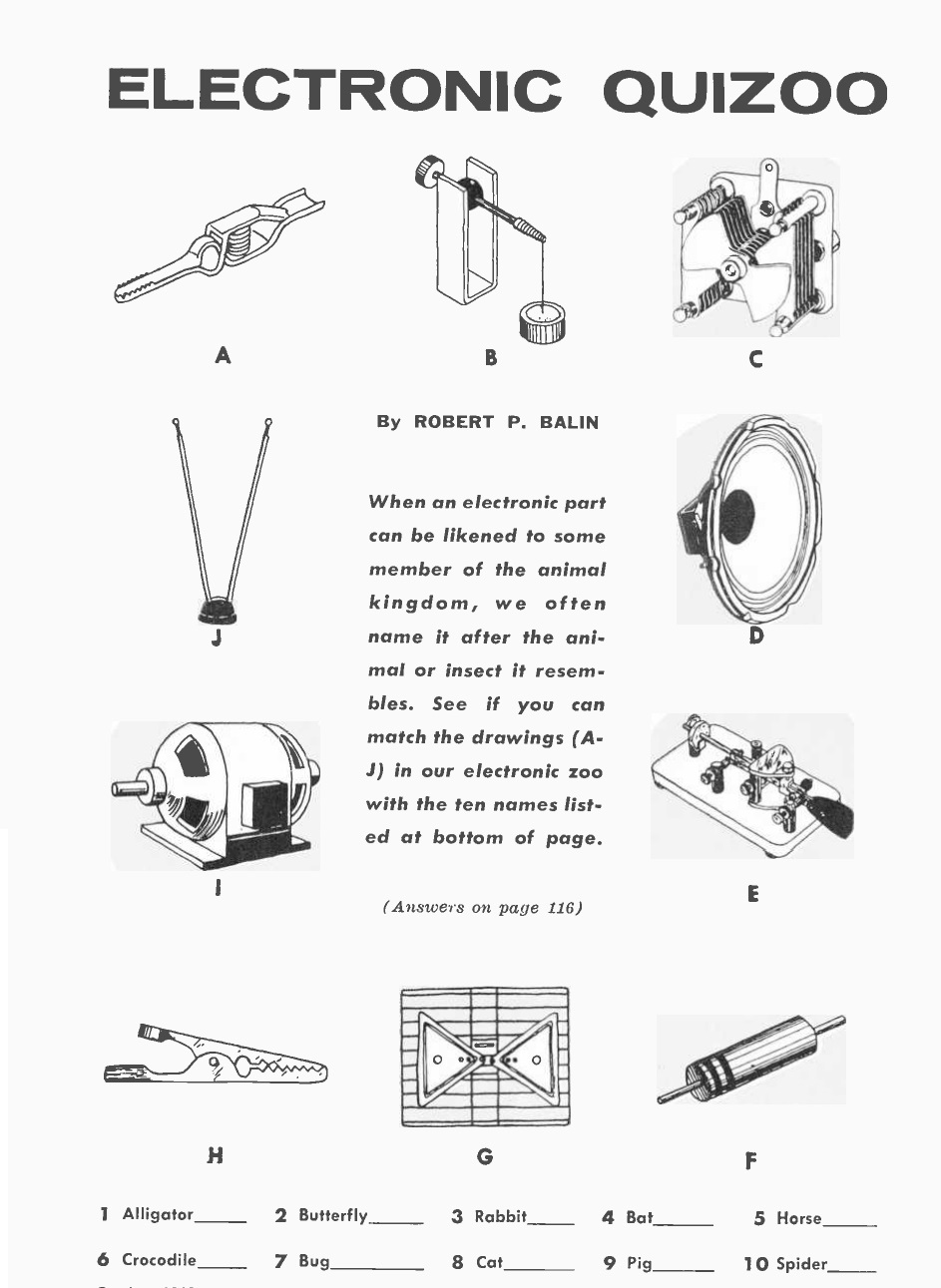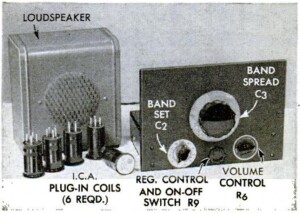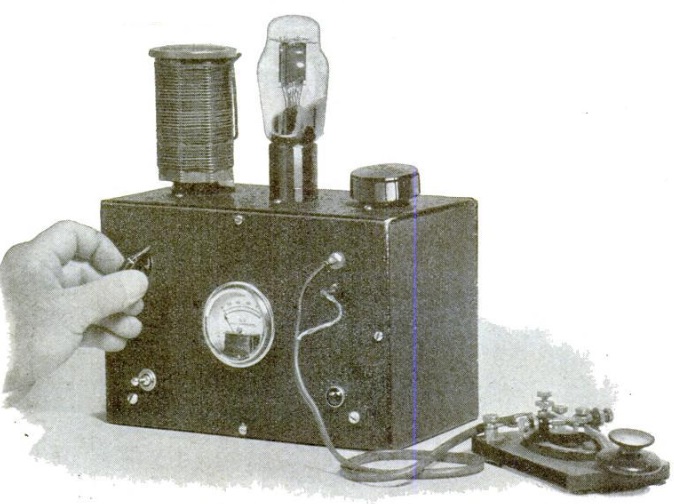 As promised, here are the answers to yesterday’s quiz, from Popular Electronics, October 1962:
As promised, here are the answers to yesterday’s quiz, from Popular Electronics, October 1962:

 Can you identify which animal goes with each of these electronic parts? This quiz appeared in Popular Electronics 60 years ago this month, October 1962. We’ll show the answers tomorrow.
Can you identify which animal goes with each of these electronic parts? This quiz appeared in Popular Electronics 60 years ago this month, October 1962. We’ll show the answers tomorrow.

 Seventy years ago, this gentleman is pulling in the short waves, or possibly a station on the standard broadcast band, with this two-tube regenerative receiver. It was ideal for those interested in becoming hams, or just for those who wanted to listen to foreign broadcasts, hams, or just local broadcasts.
Seventy years ago, this gentleman is pulling in the short waves, or possibly a station on the standard broadcast band, with this two-tube regenerative receiver. It was ideal for those interested in becoming hams, or just for those who wanted to listen to foreign broadcasts, hams, or just local broadcasts.
A 12SL7 was used as regenerative detector, with the other half of the tube serving as audio amplifier. This was fed to a 50L6 which served as final AF amplifier to drive a loudspeaker. A selenium rectifier rounded out the active devices, allowing operation on household current. The tube filaments were in series with a dropping resistor and could run directly off the household current. For best results, a 75-100 foot outdoor antenna was recommended, but stronger stations could be picked up with 20-40 feet of wire indoors.
Plans for the set were found in the October 1952 issue of Popular Mechanics.
Hurricane Ian serves as a reminder to have something in place to receive news and information in the event of an emergency. According to news reports, at least five TV stations and 21 radio stations were off the air, and internet and cellular service was interrupted in many areas. The good news, however, is that while 26 stations were off the air, over 500 stations in the state remained on the air, along with stations in other states that can be heard in Florida. So with a little bit of preparation, it’s possible to get information in an emergency.
Even if you don’t have any other radio available, as we reported previously, virtually every cell phone sold in America has a built-in FM radio. This tuner picks signals up over the air, and does not depend on the internet. Many phones come with the required software, so check your phone and see if it’s installed. It’s probably an app called “FM Tuner.” But even if the app is not installed, the tuner is built in to the hardware. This CNET article explains how to install the required app.
Your cell phone uses the headphone wire as its antenna. It will work for strong stations without headphones, but to ensure good reception, you should plug in a pair of wired (not cordless) headphones. So it’s a good idea to get a cheap pair of headphones.
It’s important to know that there is a radio built in to your cell phone. After all, most people carry their phone with them all the time, which means that you have a radio with you all the time. But that radio is not ideal, mostly because it probably uses more battery resources than a small portable radio. Also, the cell phone won’t get AM stations, which might be important if you want to listen to out-of-state stations at night. Given the minimal cost, it’s cheap insurance to buy an inexpensive AM-FM radio. As with everything, inexpensive ones are available on Amazon.
Of course, you’ll need batteries for these radios. In most cases, they take either AA or AAA batteries. The good news is that the batteries will last a long time. For occasional listening, one set of batteries will probably last several days. Even if you’re listening to it constantly (which you might in an emergency), one set should last at least a day. Therefore, it pays to stock up on batteries to have enough to make it through an emergency.
Many TV stations have realized that if there is a widespread power outage, many of their viewers won’t be able to watch. Therefore, many TV stations have made arrangements to have radio stations simulcast their broadcasts. However, once your basic information needs are taken care of, you might consider getting an inexpensive battery powered TV, in addition to having a radio. Most of these sets are rechargeable, and it’s a good idea to keep them topped off before the storm hits. If you do need to recharge during the storm, one option is to use a car USB adapter and charge them there.
Another option is a TV tuner dongle such as this one, which will turn your Android phone or tablet into a TV set.
While it’s probably a good idea to get a TV or TV tuner in addition to a portable radio, it’s important to have an old-fashioned portable radio as well. This is because the battery life on a portable radio will be considerably longer than a TV, tablet, or phone. A package of alkaline batteries will last you weeks, which is better than constantly trying to figure out how to charge your phone or TV.
For more information, see our earlier post about preparing for power outages.
Some links on this site are affiliate links, meaning that this site earns a small commission if you make a purchase after using the link.
 Eighty-five years ago this month, the October 1937 issue of Popular Science carried the plans for this simple transmitter for 160, 80, 40, or 20 meters. The rig was designed with portable operation in mind, hence the small cabinet. To keep it small, the tube, coil, and crystal were mounted on top, which meant that the interior wiring was very uncluttered. A type 47 tube was used, along with a type 80 rectifier. All parts were said to be easily obtainable.
Eighty-five years ago this month, the October 1937 issue of Popular Science carried the plans for this simple transmitter for 160, 80, 40, or 20 meters. The rig was designed with portable operation in mind, hence the small cabinet. To keep it small, the tube, coil, and crystal were mounted on top, which meant that the interior wiring was very uncluttered. A type 47 tube was used, along with a type 80 rectifier. All parts were said to be easily obtainable.
In tests, the rig was able to get out over 500 miles, and the quality was said to rival many larger and more expensive sets.
Any receiving antenna could be used, but a “single wire designed for the proper wave length” was recommended. The article included an interested method of calculating the length of a (half-wave) antenna: “To calculate the proper antenna length in feet, simply multiply the wave length to be covered (in meters) by 1.56.” While I’ve never seen it expressed this way, this is the equivalent of the familiar 468/f formula.
The author was Donald Levenson, W8PIN.